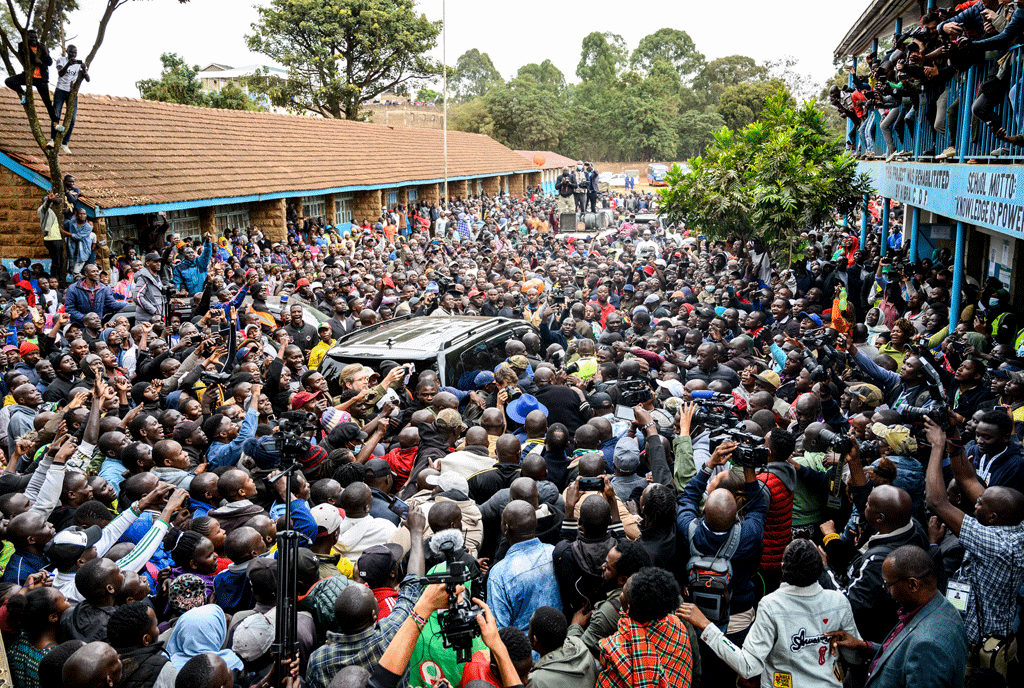Prime
Why many Ugandans are looking at Kenya and saying, dear Lord, when!?

Author: Daniel K Kalinaki. PHOTO/FILE.
What you need to know:
But it is hard not to pause for a moment to admire the purring and whirring of the democratic machine as it transforms the will of the people...
It is still possible for Kenya to snatch defeat from the jaws of victory, either during this electoral cycle or subsequent ones. The outcome of the presidential election, which was yet to be called at the time of writing, could be challenged in the courtroom or even in the streets.
But it is hard not to pause for a moment to admire the purring and whirring of the democratic machine as it transforms the will of the people, through a labyrinth of counting machines and bureaucratic procedures, to the seat of power.
It wasn’t always like this. Like Uganda, Kenya has its history of dictatorships and leaders who did not want to leave office. Kenyatta was as rapacious as the colonial administration he replaced. Moi was brutal and narcissistic. Neither did those who followed descend in white plumage from heavenly places. Hiding behind his heavy eyelids, Mwai Kibaki stole an election and was sworn in under proverbial candlelight, while both Uhuru Kenyatta and Williams Ruto jingle-belled their way to power with the rattling of skeletons from the 2007-8 post-election violence.
But – and it is a big, shapely, but – Kenya has demonstrated the kind of forward movement and civic arrangements that we can only gawk at, gobsmacked.
Some of it is ephemeral. Despite a tightly contested and emotional race that has felt existential for both the Ruto and Raila Odinga camps, the campaigns have been largely peaceful. None of the candidates were arrested. The police did not once turn up to beat up opposition supporters or block them from accessing campaign venues.
There were sharp words, particularly between Ruto and Uhuru, who fought with the passion and intensity of jilted lovers, but few Kenyans were bruised in the making of this political drama. Political disputes, such as those over which register to use, were settled by the courts, not anti-riot police. The media, even state-owned platforms, generally told both sides of the story. No bloggers were kidnapped. The internet was not shut down. Democracy did not die in darkness.
But it is the deep structural changes that Kenya has undergone that are more remarkable. First, the last half of the Moi era created a civil society that was vocal, organised and galvanised. This formed the bedrock of the political movement that swept away Moism in 2002 but which has remained a vanguard of Kenya’s civic space, constitutional order, and an emerging democratic tradition in which disputes, however deep-seated, are contested legally, not violently.
Secondly – and perhaps counter-intuitively, the 2007/8 post-election violence shocked many Kenyans into accepting compromise as a pragmatic response to, and means of, political change. The sight of half-dressed Kenyan politicians ceaselessly crossing from brothel door to the other is not pretty. But this need to forge alliances, even unholy ones, forces people to talk to and persuade one another.
Third, and arguably most importantly, Kenya’s 2010 Constitution introduced important safeguards against an imperial presidency. It locked in term limits, saddled the head-of-state with a deputy they cannot easily shake off or fire at will, and devolved roles and significant chunks of the national budget from the centre to county governments.
Cynics initially dismissed this as decentralising corruption. And it is true a lot of the money that goes into the counties is “eaten”; but it also serves as a distributive mechanism (with jobs and contracts generally going to local entities) and diffuses the political contests from one winner-takes-all national contest, to lower hanging fruit within county governments that are within easier reach.
Citizens in an opposition-leaning corner of the country might not like the president and ruling party, but they can vote their own to run county affairs knowing that they will have resources to deliver some services at the grassroots. They do not have to prostrate before the central government; they can march on the governor’s mansion instead.
And even if the central government somehow meddled in their affairs or stymied the flow of funds, all they have to do is give it time – 10 years at most – and vote in a new one. It turns out that once a country undergoes a transition of power from one elected leader to another, even if that transition is imperfect, it is hard and often impossible for subsequent leaders to change those rules to become life presidents.
Many Ugandans, long conditioned to violence and the muzzling of voices, must be looking across the border to Kenya and saying, in low voices in order not to be heard or misunderstood, dear Lord, when?!
Mr Kalinaki is a journalist and poor man’s freedom fighter.
[email protected]; @Kalinaki




